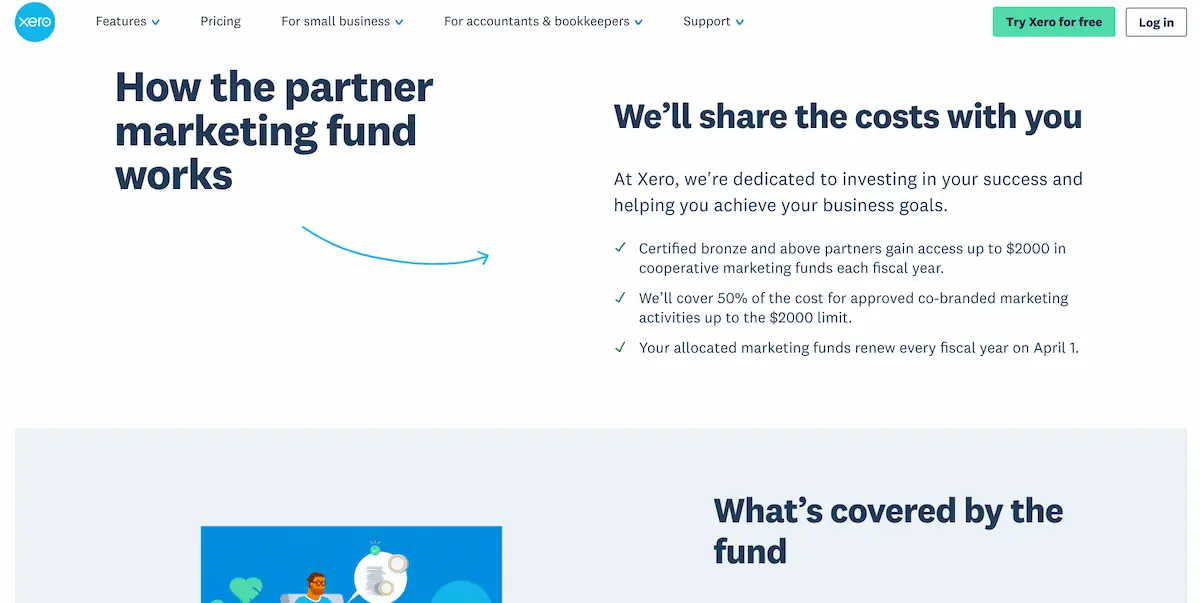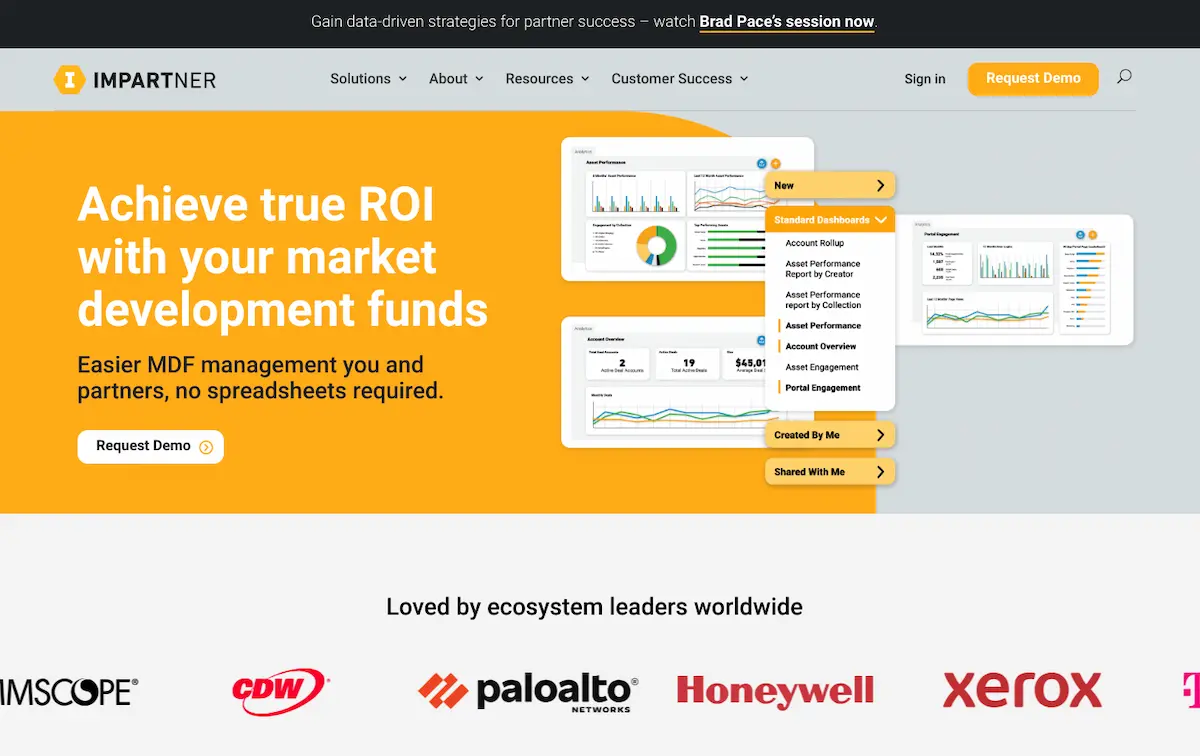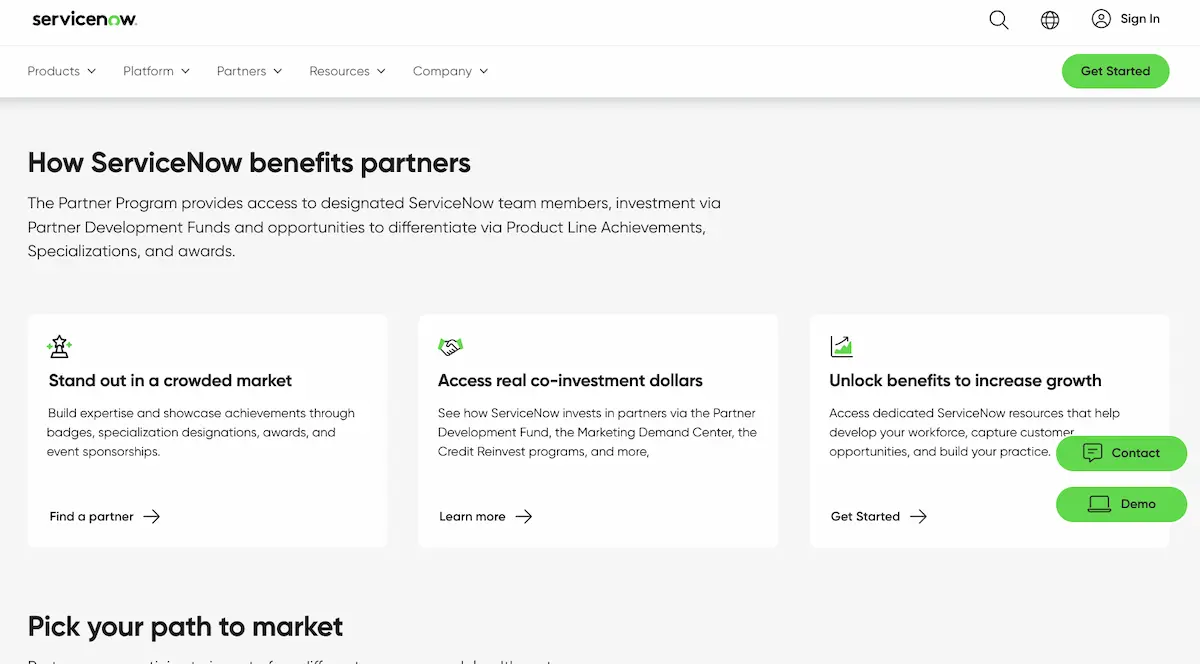Market Development Funds (MDF) are one of the most underutilized and powerful tools SaaS vendors have at their disposal to help channel partners market and sell more effectively. MDF is money set aside to drive sales and marketing efforts between the vendor and their partners. Occasionally, they're deployed to fund joint product development (integrations, new joint product features, etc).
I’ve deployed MDF effectively many times during stints at Facebook and at HubSpot - but we had varying degrees of success in the early days, and made plenty of mistakes. Many wins, some epic fails.
This guide should hopefully help you and your team earn more wins than fails, especially when you're starting out. It covers the ins and outs of MDF. I’ll explain how it works, why it’s so powerful, and share best practices for deploying it effectively.
What are market development funds?
In simple terms, market development funds are:
- A powerful way to help partners market, sell and develop products serving specific segments of your customer base you need to target more effectively.
- Programs designed with simple, transparent eligibility criteria for channel partners, and a fund allocation process that rewards performance.
- Technology-enabled, leaning on technology that tracks and reports on partner engagement, market penetration, and revenue growth - through vendor and partner-facing views.
Side note: MDF is sometimes referred to as "marketing development funds." This isn't wrong per-se, but - as i'll explain - a well deployed marketing development fund drives positive outcome beyond just marketing activities.
Understanding Market Development Funds (MDF)

When a market development fund is deployed well, it creates new market opportunities for vendors and partners through initiatives like joint product development, co-branded email campaigns, joint webinars, targeted paid ads, trade shows, and content marketing activities. These showcase the value of new products and services and help specific types of customers use both vendor and partner products.
For vendors, and when deployed well, MDF helps channel partners sell the way vendor customers like to buy. It aligns vendors and partners with mutual business objectives and success metrics. A strong partner ecosystem, fuelled by MDF can accelerate local awareness of vendor products, and grow market reach for vendors faster.
How market development funds programs work
To deploy MDF effectively, vendors need to consider eligibility, fund management, and fund allocation. This includes what types of partners and marketing activities are supported, what the approval process is, and how funds will be allocated.
Defining this will vary from vendor to vendor, and platform to platform. There is no one "playbook" that will work across them. But these three "pillars" are important to define early on.
Eligibility criteria
This can vary from platform to platform. At Facebook, in the early days of what is now Meta Business Partners, we deployed allocated funds to encourage partners to build a market presence and drive sales of our adverting products in underdeveloped markets (specifically parts of APAC and LATAM).
Our eligibility criteria included the readiness of partner products and support teams for these markets - products and documentation had to be localised, product-market fit had to be in a good place, and partners had to have a local entity in the relevant markets.
At HubSpot, we deployed MDF funds to incentivize partners to build free themes for HubSpot's Template Marketplace. To be eligible, partners had to already be in good standing with HubSpot's Solutions and App Partner programs. The themes they built had to meet product standards (accessibility, pagespeed, etc) and engagement standards (install growth within certain timeframes).
For most vendors, eligibility might be based on a variety of "performance" factors - such as the number of customers acquired, new revenue generated, number of targeted marketing campaigns delivered, or other outcomes like lead generation that matter to their business. In some cases, eligibility can depend on the levels of "co-op" marketing funds channel partners can commit to the partnership.
Fund allocation
This can often be more art than science. At Facebook, as we allocated program funds to partners in "emerging" markets, we simply divided up the MDF fund evenly among approved sets of partners in each region. At HubSpot, we allocated a financial amount for each theme developed that met certain product and performance thresholds.
Neither of these MDF programs was perfect, and no fund allocation process can be perfect.
In most cases, you should allocate market development funds based on the performance of marketing activities. Which partners are performing well? Which partners have great marketing capabilities that align with your goals? (e.g. increasing adoption, reducing churn, getting into a new industry/market, etc). Fund allocation should be tied to delivery of well defined marketing initiatives and activities that drive mutual success.
Fund management

Market development funds need to be managed effectively to avoid waste and ensure qualifying partners are aligned on how it works. At a minimum, you should set up program guidelines around how market development funds can be used, what activities are eligible, and what the approval process is.
To manage efficient deployment of development funds, partner fund management software like Impartner, Channel Mechanics, and Channeltivity help vendors manage and track partner funds in real-time. They help vendors approve funds, report on spend, and are essential if vendors have partners running marketing campaigns, as they'll need to review and approve campaigns and landing pages before they launch.
Governance
Vendors should set up governance frameworks to manage market development fund allocation, usage, and compliance. This includes setting up policies around what marketing activities are eligible, what reporting looks like, and how long funds are available.
Should market development funds pay for trade shows, advertising campaigns, or marketing materials? Which percentage of each purchase should be borne by channel partners (if any)? Is there a set approval and sign-off process for each expense?
Vendors should also set up approval workflows for fund requests, and define what criteria partners need to meet when submitting claims. It can also be beneficial to aggregate marketing resources (white papers, creatives, etc) in one place, and measure the impact of lead generation activities in one central place.
Co-funding

In many cases, vendors and their partners co-fund MDF. Through co-op programs they both contribute financial support and marketing support to generate qualified leads and brand recognition for vendors and partners alike. ServiceNow, for example, offers investment via "Partner Development funds" which they frame as "co-investment dollars." These are, in effect, marketing development funds.
The percentage contribution of vendors and partners to co-op funds can vary based on the maturity of vendors and partners, but in many cases a 50/50 match is appropriate.
Goals and benefits of market development funds
Market Development Funds (MDF) are a powerful way to help partners market to your customers. They’re especially important where MDF acts more like a "marketing development fund." MDF helps partners execute impactful marketing campaigns to the right customers, and vendors you target the same customers and segments.
When done right, MDF gets vendors and partners aligned on marketing strategies. Time-to-market is faster, and ROI is much higher because marketing programs target the same customers and segments.
MDF program goals
To reap the best benefits, MDF program goals should be tied to specific goals for vendors (and their marketplaces) - such as installs, SaaS product adoption, or getting into new verticals. This helps partners market to the right customers and segments.
Defining clear program goals helps vendors define and measure which product development and marketing activities work, and which don't. Are joint webinars more effective than targeted ads? What types of campaigns resonate with your customers? Share this feedback with your partners, and they’ll be able to run more effective campaigns.
Digital marketing initiatives should be instrumented well, particularly for lead generation activities and where a marketing strategy depends on a wide range of digital channels. Instrumentation and measurement is, obviously, much harder to enact where MDF is deployed for trade shows, offline advertising campaigns, etc.
Benefits for SaaS vendors and app marketplaces
MDF is a key way to help vendors market to potential customers through partners. It’s powerful tool to grow brand visibility, market penetration, and develop a high performing indirect sales channel.
When done right, MDF gets vendors and partners aligned on a go-to-market strategy and agreed upon marketing activities. Time-to-market is faster, future growth is easier to achieve, and ROI is much higher because vendors and partners are targeting the same customers and segments through a unified market presence.
Benefits for channel partners
MDF helps channel partners market to the right customers, helps them target the same customers and segments in a unified way, and focuses them on customer acquisition activities that drive strong sales performance for themselves, and for vendors.
Co-op programs, that fund joint marketing between partners and vendors, help partners get more "bang for buck" and to leverage the brand and reputation of the vendor to accelerate their own growth.
Challenges and risks
MDF programs are one of the most challenging types of programs to deploy effectively. If not set up and managed correctly, MDF programs can waste time, money, or both.
Partners can sometimes indulge in "spray and pray" marketing activities solely to unlock MDF funds - not to create unique customer value. Without clear goals, eligibility criteria, and a process for how MDF works, there is a chance - albeit small - that partners will try to "work the system" to unlock funds.
MDF programs need to be managed effectively to avoid waste and ensure all parties are aligned on how it works. Without the right technology and tools, you won’t be able to track what’s working, and what isn’t.
Partner marketing reporting
Your partners need to report on what’s working, and what isn’t - and there must be a foundation of mutual trust to enable this. Again, technology plays a huge role here - without a partner marketing reporting platform, this is difficult to track in real-time. Vendors and partners need to be able to see what’s working, and what isn’t, to adjust MDF fund allocation and marketing strategies accordingly.
Partner participation
Low partner participation is a common challenge. Partners often don’t know a MDF program exists, or how they might work. Application processes are often too complicated. Criteria and guidelines are often unclear. Vendor partnership teams often don't provide adequate support to onboard and enable partners.
Make MDF a competitive advantage
That's all I got! I'll keep this post updated as I recall more examples and case studies - and i'd love for you to share any feedback you have. Market Development Funds (MDF) are a powerful way to help partners create new product value and grow vendor reach and brand visibility .
When deployed well, MDF is especially impactful when building SaaS app marketplaces and partner programs. MDF aligns vendors and partners on a unified go-to-market strategy. Time-to-market is reduced, and ROI is much higher because customers and segments are targeted in a unified way.
Market development funds can be a huge competitive advantage for your business - whether you're a vendor or partner.
FAQs
What are Market Development Funds (MDF)?
Market Development Funds (sometimes called "marketing development funds") are allocated funds set aside by SaaS vendors to attract and incentivize channel partners to help enter local markets, develop new products, generate sales leads, and enhance brand visibility.
How do MDF programs work?
MDF programs set eligibility criteria and allocate funds and rewards based on partner performance and strategic alignment. Vendor program teams manage development funds by using governance and partner fund management platforms to ensure partners are aligned on expectations and hoped outcomes.
What are the benefits of MDF for SaaS vendors?
MDF helps SaaS vendors grow new customers and segments. It helps them grow their channel sales motions by targeting the right customers and segments with the help of partners. It helps vendors acquire new customers, grow revenue and amplify brand visibility.





